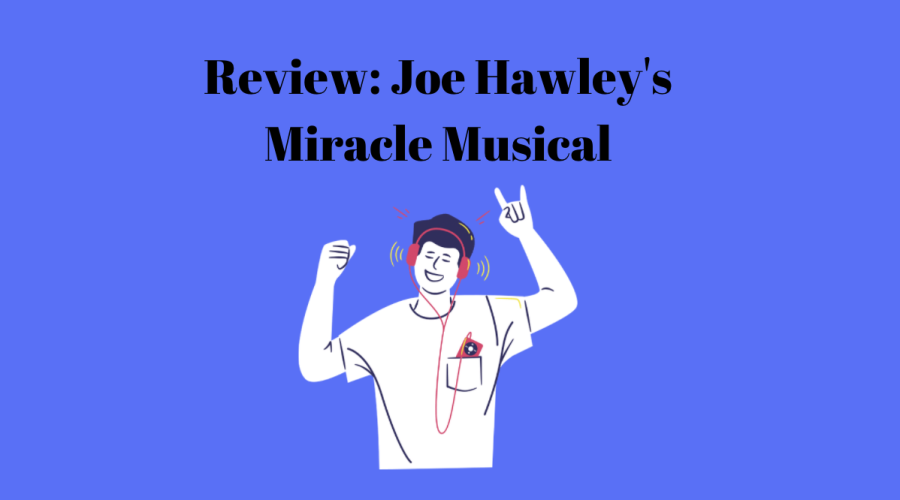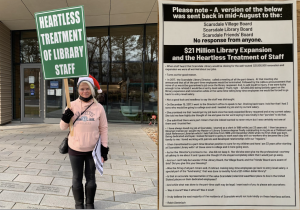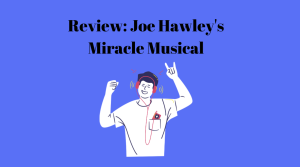Review: Joe Hawley’s Miracle Musical
December 22, 2021
Wide ranges of instruments, beautiful melodies, meaningful lyrics, and vocal duets. Who else can create the perfect storytelling album? For the creative mind of Joe Hawley, music is his way of expressing multiple emotions and messages.
ミラクルミュージカル, or “Miracle Musical” is a music project directed and written by Hawley and members from his previous band “Tally Hall”. Unlike many albums that are usually compilations of songs by the artist, Miracle Musical’s album “Hawaii Part II ” expresses a highly cryptic story that can be perceived in many different ways. This diversity prompts the listener to continue listening in order to form their own interpretation of the entire album. Even the album’s title requires a listener’s interpretation of why the album is “part II”, seeing as there is no part I.
The most common interpretation of the album is that it is a love story between two characters, with the name “part II” representing the “parting” of two souls. Songs in the beginning signify a sense of loneliness in the main character. As the album progresses, the character falls in love, but their relationship becomes conflicted and ends with feelings of regret.
On top of that, incredible singing and instrumentals drive the listener to say “let there be more” (a reference to a lyric in the song), with a broad range of styles from the classical orchestra, Broadway, rock, rap, and even video game chiptune. The mood of the songs can vary from the upbeat melodies of “Isle Unto Thyself” to sad feelings of loneliness in “Stranded Lullaby” and even scary themes in “The Mind Electric”, all of which create an atmosphere or rapid moods changes that create buildups, plot twists, and conflicts in a story. Even leitmotifs (similar melodies or lyrics) are subtly included to associate the songs as one.
The album also harnesses the use of many different languages. For example, the song “Black Rainbows” has a chanting section that emphasizes the colors in the Hawaiian language. In “宇宙ステーションのレベル7” or known as “Space Station Level 7”, Japanese is used as the main language, but there are some words in English during the chorus section, and a section sung in French.
“The Mind Electric” is by far the most unique song on the album. The first half of the song is played in reverse, and then the other half is normal speed, however, the song is not only reversed, but there is actually a distorted version that adds scary but meaningful sections to the song, as if it was a memory being recalled but slightly altered. The distorted version also has more synth added to the second to last section. Both versions have an extremely wide range of instruments and genres, featuring the electric guitar, beautiful piano, orchestra strings, opera voices, synths, and heavy drums.
Some music videos of the songs have been released, featuring a very abstract animation film for “Isle Unto Thyself” and a video game-themed video for “Labyrinth”.
Finally, the last song, “Dream Sweet in Sea Major” includes several motifs from almost all of the songs in the album that sums up the album and brings an end to the story like a musical would. The actual ending of the song feels like it should be connected to another, and it is.
The ending is a transition to a single release song called “Variations on a Cloud”. Like the album itself, the song is highly cryptic and can be perceived in many different ways. Many theorize that it could be a message about how we as the human race always encounter conflicts with ourselves or a tribute to the tragic events of 9/11. The song features many motifs from the rest of the album, similar to “Dream Sweet in Sea Major”, and even features an altered version of “Ruler of Everything” by Tally Hall; the meaning of that song is that time is the “ruler of everything” and will destroy everything in the end no matter what we as humans do. The song finally ends with a true ending to the experience of Miracle Musical.
Dr. Noble, the school’s band director, has been kind enough to offer his opinion on the album, reflecting on both a casual listeners perspective and a take on the writers’ motives and composition techniques.
So what did you think about the song (referring to the song “White Ball”) overall?
“I like that it reminds me a bit of really good Broadway tunes where you have two protagonists that don’t really speak to each other but they both create a dialogue. The upbeat orchestra beat in the beginning makes the song feel like it’s moving along, and makes you want to keep listening. It’s like a vamp which means there’s a repeated instrumental so listeners focus on the lyrics or dialogue. The song seems very well designed as if there was a discussion between the two singers.”
Have you ever heard of a song similar to this one?
“[Referring to our earlier discussion of the similarities between Miracle Musical songs compared to Broadway tunes] I’m thinking of Miss Saigon, Phantom of the Opera, any of the classics where there are two characters singing, or any kind of duet.”
Do you see any students enjoying this kind of music? Are there any specific groups of people that might be more interested?
“That’s a good question, it sounds contemporary enough that I think a lot of people would be interested. Compared to music like Hamilton which features Hip-Hop, this song gets my interest in the beginning because it has that little motive, and I kind of want to hear what’s happening next. I think the majority of people would probably be interested in what’s happening with it. People who are musicians would appreciate it more because it’s not so ‘in your face’ loud like electric guitars or loud drums.”
Do you think a song with more poetic lyrics or a story could impact the listeners?
“Definitely, I think it would impact people who pay attention to it, if you’re actually focusing on it versus listening as background music because a lot of people don’t really focus when they listen to music.”
How might students in Scarsdale react if they heard this kind of music?
“I think the majority would at least be interested in where it develops, but there would probably be a sizable plurality that says ‘it sounds too much like Broadway’. People with a musical background I think would definitely like it because it is well constructed.”
Do you have anything else you can add?
“I think the orchestration of it is what makes it interesting. I think you’re right, your intuition on it is right that if you hear a dialogue and when they come together, and when the duet becomes sort of like a simultaneous action, that’s when it becomes really interesting because it’s a melody in counterpoint. Musicians would appreciate that more than people who just listen to music in passing. So it’s kind of like art, as if a person just walks by a painting, versus a person who stops to really look at it and take it in, and see how it was put together, colors around it, how the composition is, and the depth. So I think this is a really good piece of music for structure and form. The song is also a good length for a pop or Broadway tune, around under four minutes, so it kind of takes you on a journey, and then reaches a big point, then comes back down, which is good composition. I was glad you showed it to me.”
I highly recommend Miracle Musical’s works and even the band Tally Hall. They are both very talented groups who put extraordinary effort into giving meaning to their songs to teach the listener a lesson or tell a story. Although the lyrics urge the listener to put effort into interpretation, the songs do create a great amount of entertainment like a Broadway musical, and instrumental-only versions of the songs can still be enjoyed as background music for work or studying. The album is definitely worth giving at least one listen to try a new and different kind of music experience.


















